Mat Bingham captures mandarin ducks on the River Lathkill.
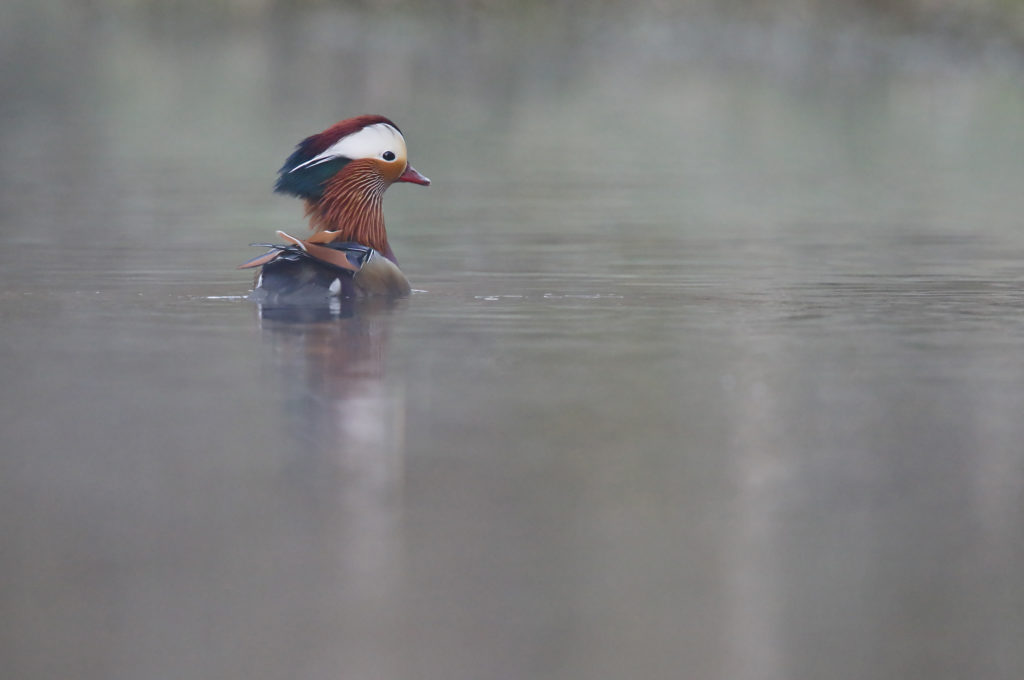
Over 40 years ago a very much younger me was feeding a male mandarin duck at the Peakirk Wildfowl and Wetlands Trust Centre, now long since closed. I can remember the mandarin duck had striking plumage of browns and oranges with a red bill, the eyes accentuated by a flash of white below a crest of iridescent green. Since then, the mandarin duck has always stuck in my mind as a bird which is exotic and beautiful, to be admired.
Mandarin ducks are a non-native species brought from the Far East by the Victorians to brighten up their ornate water gardens. It was inevitable that some of these ducks would escape. They found our slow-flowing streams and rivers framed by deciduous woodland to their liking. There are now more mandarin ducks in Britain than in their native China, where their numbers are declining at an accelerated rate due to habitat loss. Logging, pollution and hunting have also had a significant impact on the mandarin duck population in Russia. Only the native population in Japan appears to be stable.
I had a recent encounter with mandarin ducks in early spring on the River Lathkill. My first sighting was of a pair roosting in a tree which had fallen across the river, a victim of last year’s storms. Mandarins are one of two types of duck that nest in trees, the other being an American species, the wood duck.
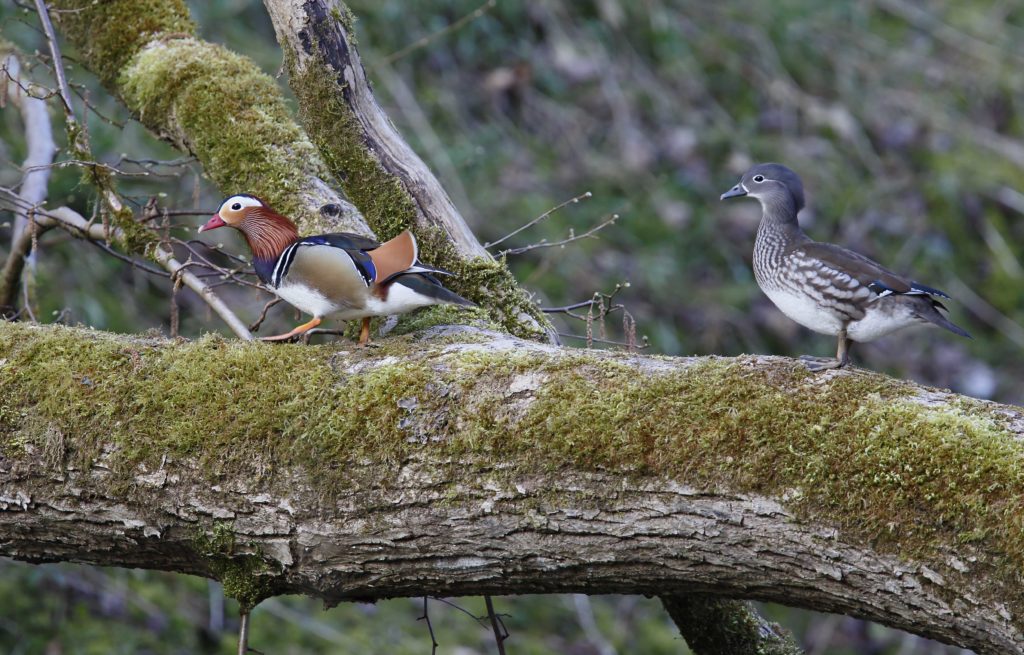
The male and female mandarin are easy to tell apart in breeding plumage, the male striking in reds and browns, the female a more toned-down grey and white but no less beautiful.
When on the wing their contact call is quite distinct which made it easy for me to track them as they flew up and down the river. Later in the spring they seemed to have a preference for one particular weir pool on the river where they spent most of their time. Their daily routine consisted of feeding on aquatic waterweed, followed by periods where they would haul out of the water onto a favourite log to preen and nap.
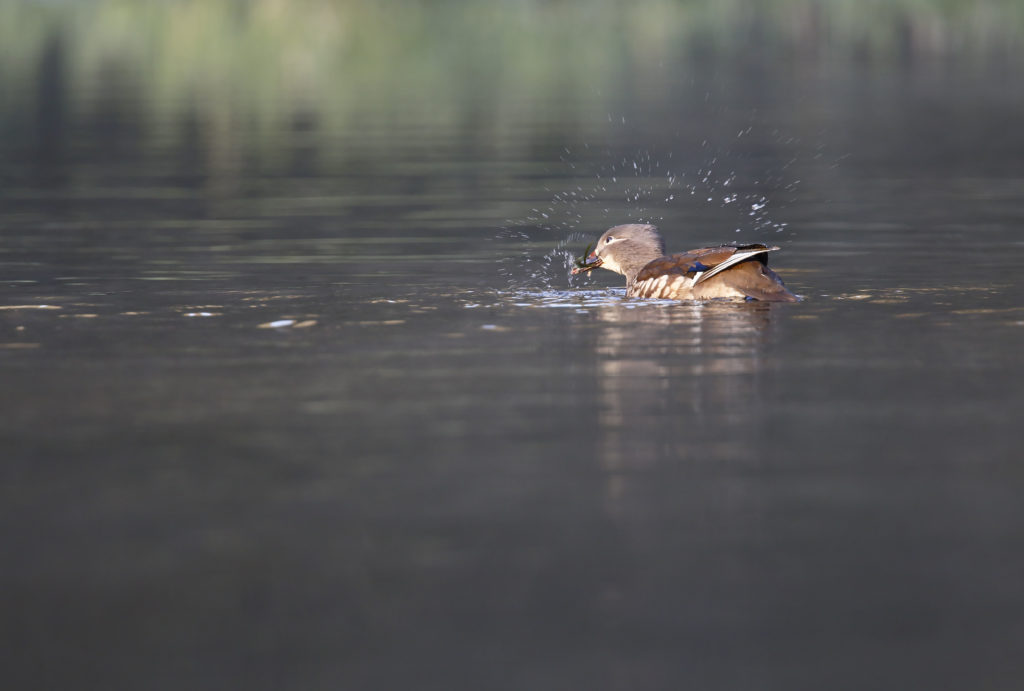
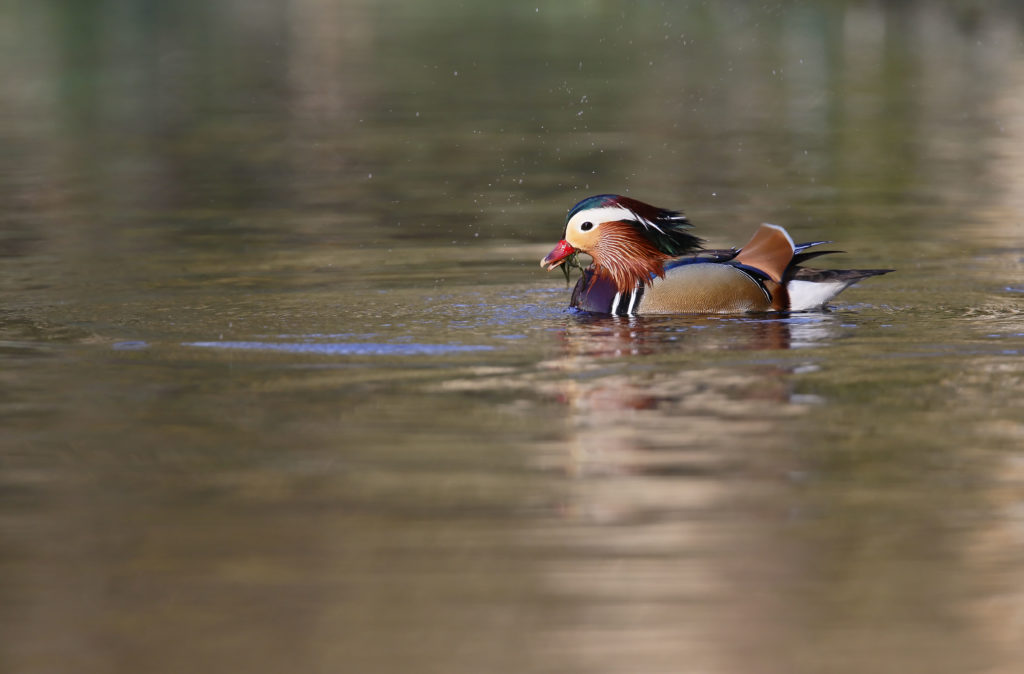
After a few weeks, a younger male arrived who was very much interested in the female. Most of the time he would keep a respectful distance but if he got too close, the breeding male would chase him away. With the younger male around, the breeding male always stayed close to the female.
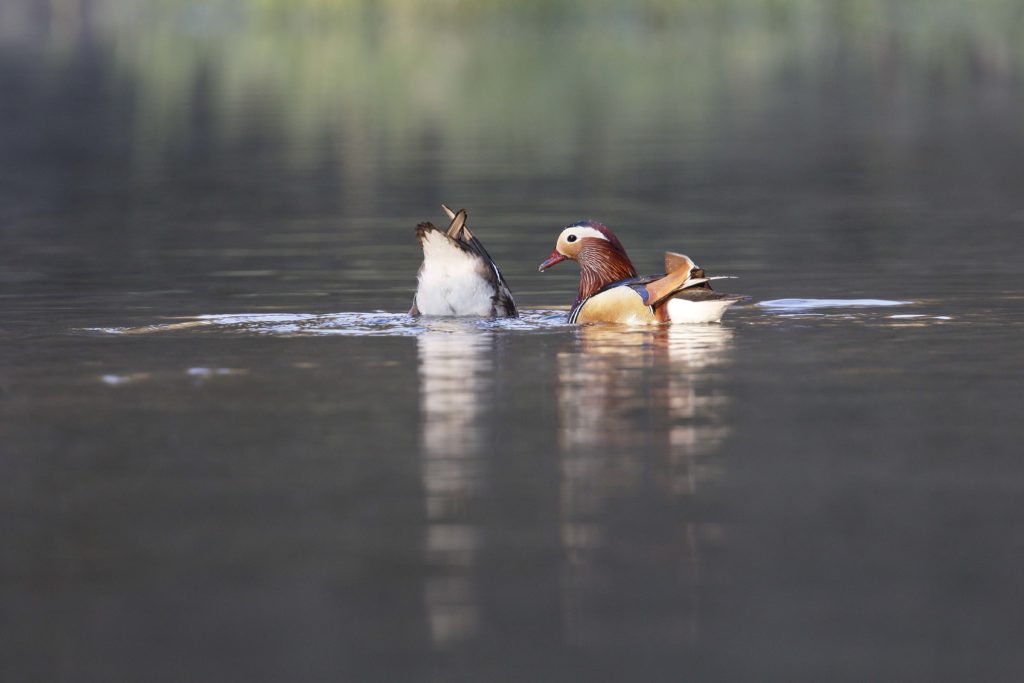
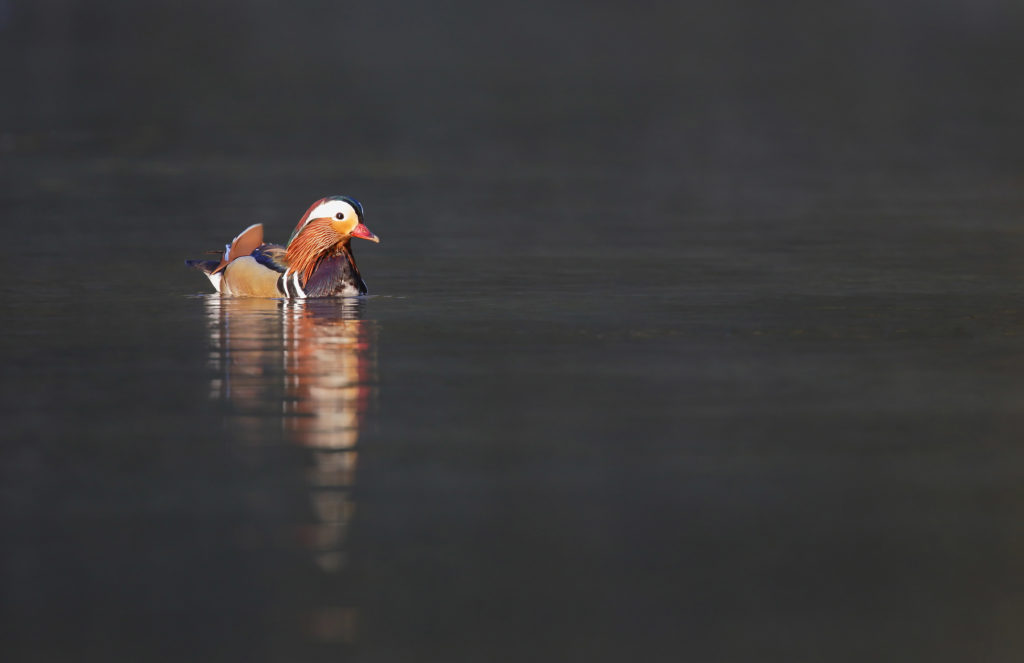
In late spring I visited the river and couldn’t find the mandarins anywhere. I spent hours walking the river and looking up in the trees to see if I could spot their nest. I had assumed the nest would be close to the pool but this didn’t appear to be the case. With hundreds of mature trees on the steep riverbanks and the nest most likely being tucked away in a tree cavity, I never did manage to find them.
I kept up my visits and early one morning I was rewarded with a really good sighting of the female with her ducklings. She had been hiding her ducklings in relative safety under some overhanging branches on the riverbank. I only spotted them as a hatch of flies on the river seemed to have created a lot of excitement in the ducklings and they were ignoring their mum’s efforts to herd them back under cover. The ducklings would try to leap up to snatch a fly but they never seemed to have any success. This didn’t seem to dampen their enthusiasm until reluctantly, they obeyed their mum, returning to the relative safety under the overhanging trees.
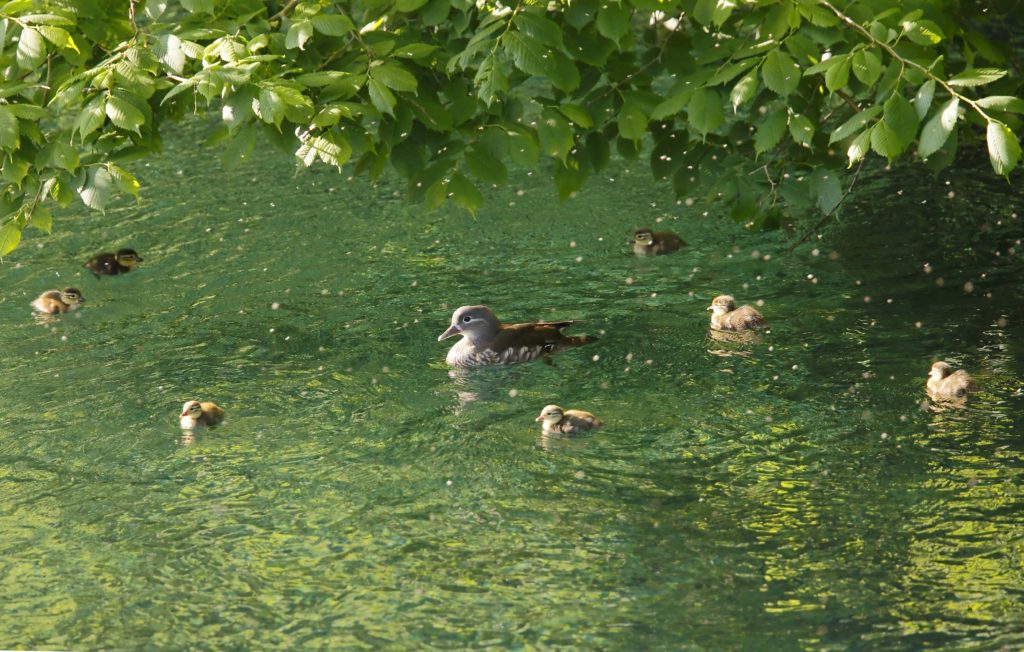
Further along the river I found one of the male mandarins, probably the breeding male, already in transitional eclipse; he was moulting out of his breeding plumage. Male mandarins look similar to females in their non-breeding plumage, but when moulting, they really do look a sorry state.
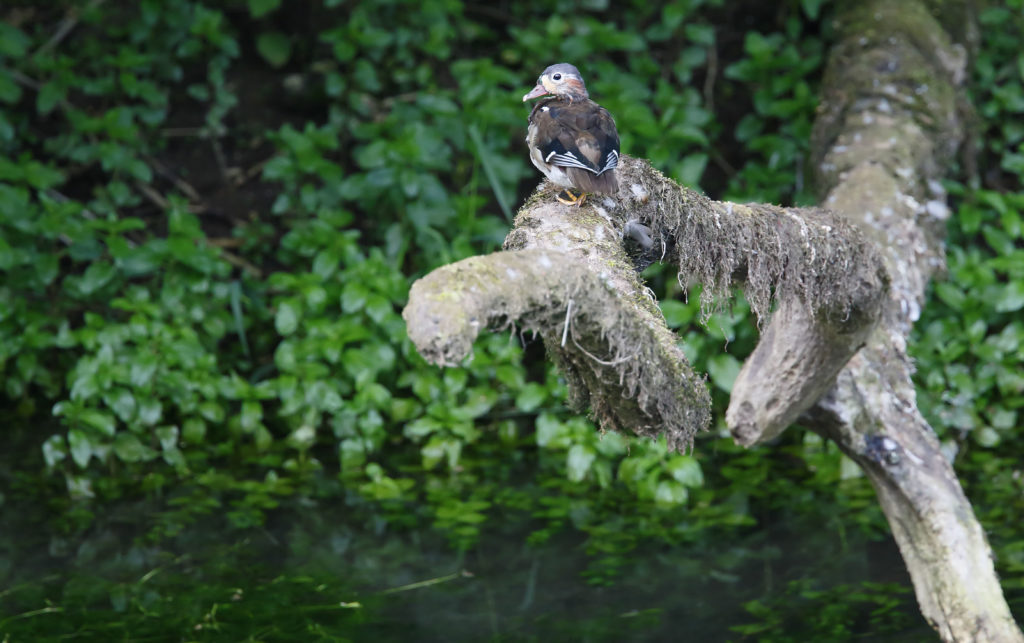
I spotted the female with her ducklings again about four weeks later. They were much bigger and she appeared to still have all seven. Hopefully, they will form a flock over the winter and stay close to the safety of the river.